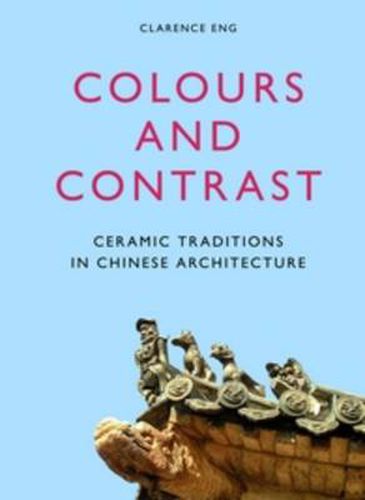Readings Newsletter
Become a Readings Member to make your shopping experience even easier.
Sign in or sign up for free!
You’re not far away from qualifying for FREE standard shipping within Australia
You’ve qualified for FREE standard shipping within Australia
The cart is loading…






Ancient Chinese halls are celebrated for their majestic rooflines. Their finish and visual mass have evolved to meet the tastes of patrons and to signal the role of their occupants, whilst of course ensuring structural robustness. However, the visual impact of these structures comes chiefly from their ceramic ornament. Indeed, travellers through the centuries would first have glimpsed a distant city by the sunlight glinting from its tallest rooftops. These important ceramics can sometimes engage fully with established disciplines such as architecture or fine ceramics, but in Colours and Contrast Clarence Eng cogently argues that they be studied in their own right. He introduces the aesthetics, history and technology of Chinese architectural ceramics, demonstrates that similar levels of skilled expertise were applied both to glazed and unglazed ornament, and describes their special contribution to structures designed primarily to delight the viewer, such as screen walls and pagodas.
$9.00 standard shipping within Australia
FREE standard shipping within Australia for orders over $100.00
Express & International shipping calculated at checkout
Ancient Chinese halls are celebrated for their majestic rooflines. Their finish and visual mass have evolved to meet the tastes of patrons and to signal the role of their occupants, whilst of course ensuring structural robustness. However, the visual impact of these structures comes chiefly from their ceramic ornament. Indeed, travellers through the centuries would first have glimpsed a distant city by the sunlight glinting from its tallest rooftops. These important ceramics can sometimes engage fully with established disciplines such as architecture or fine ceramics, but in Colours and Contrast Clarence Eng cogently argues that they be studied in their own right. He introduces the aesthetics, history and technology of Chinese architectural ceramics, demonstrates that similar levels of skilled expertise were applied both to glazed and unglazed ornament, and describes their special contribution to structures designed primarily to delight the viewer, such as screen walls and pagodas.